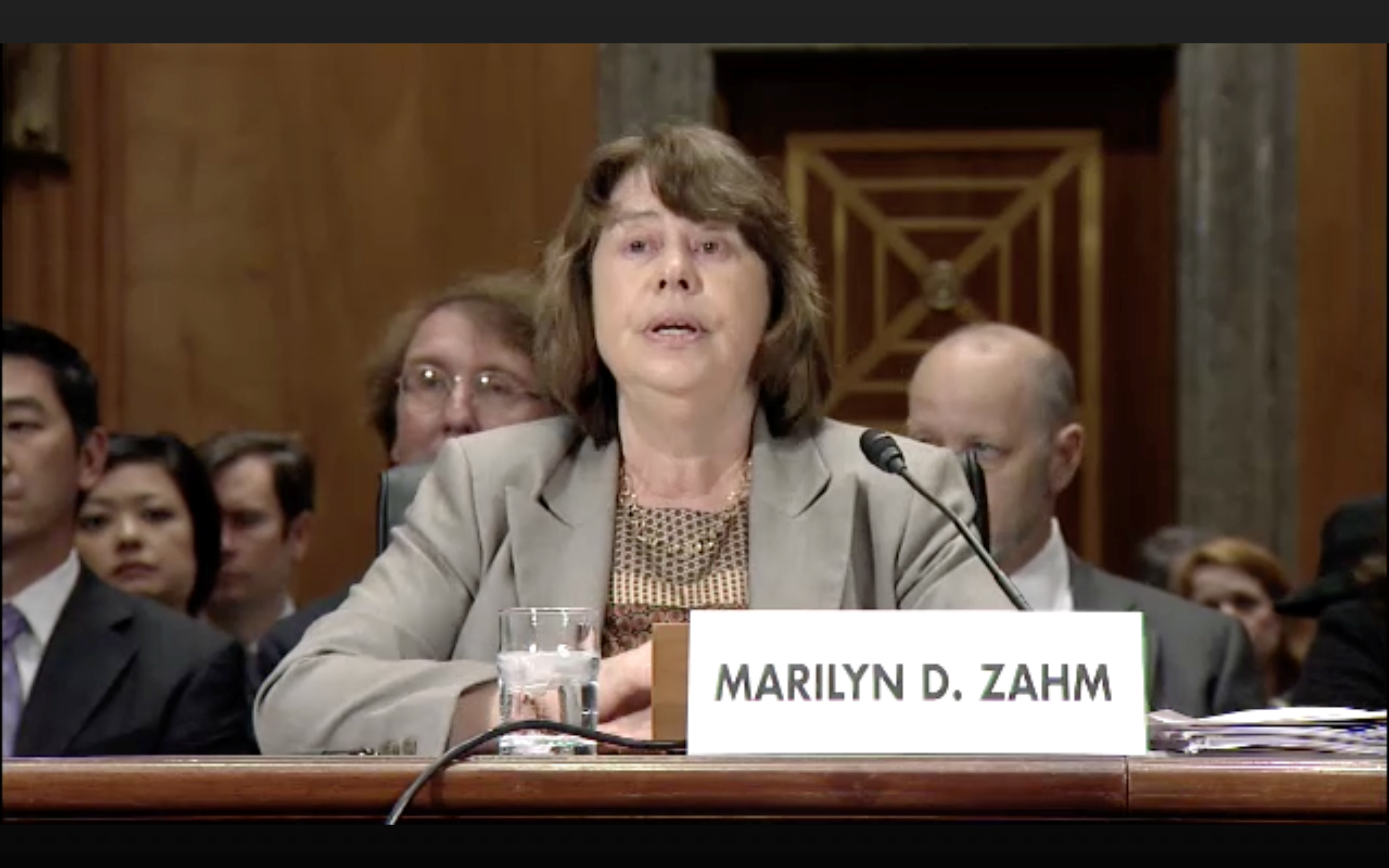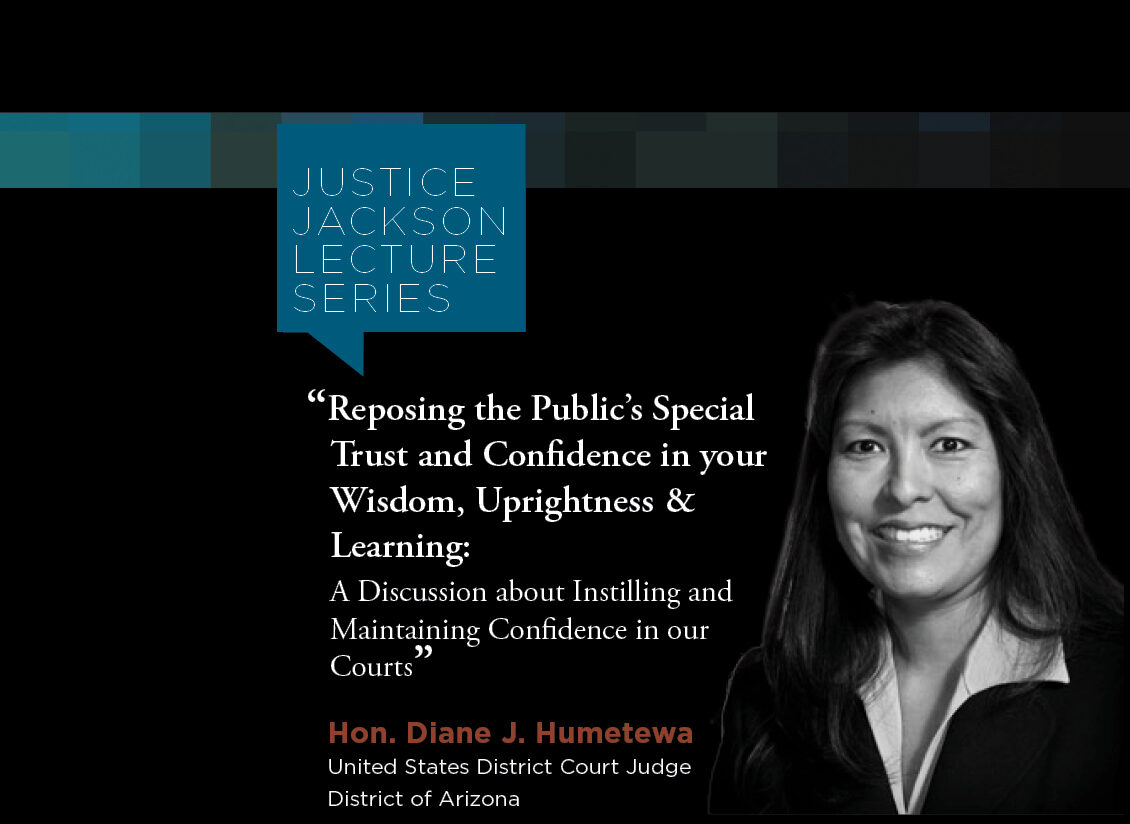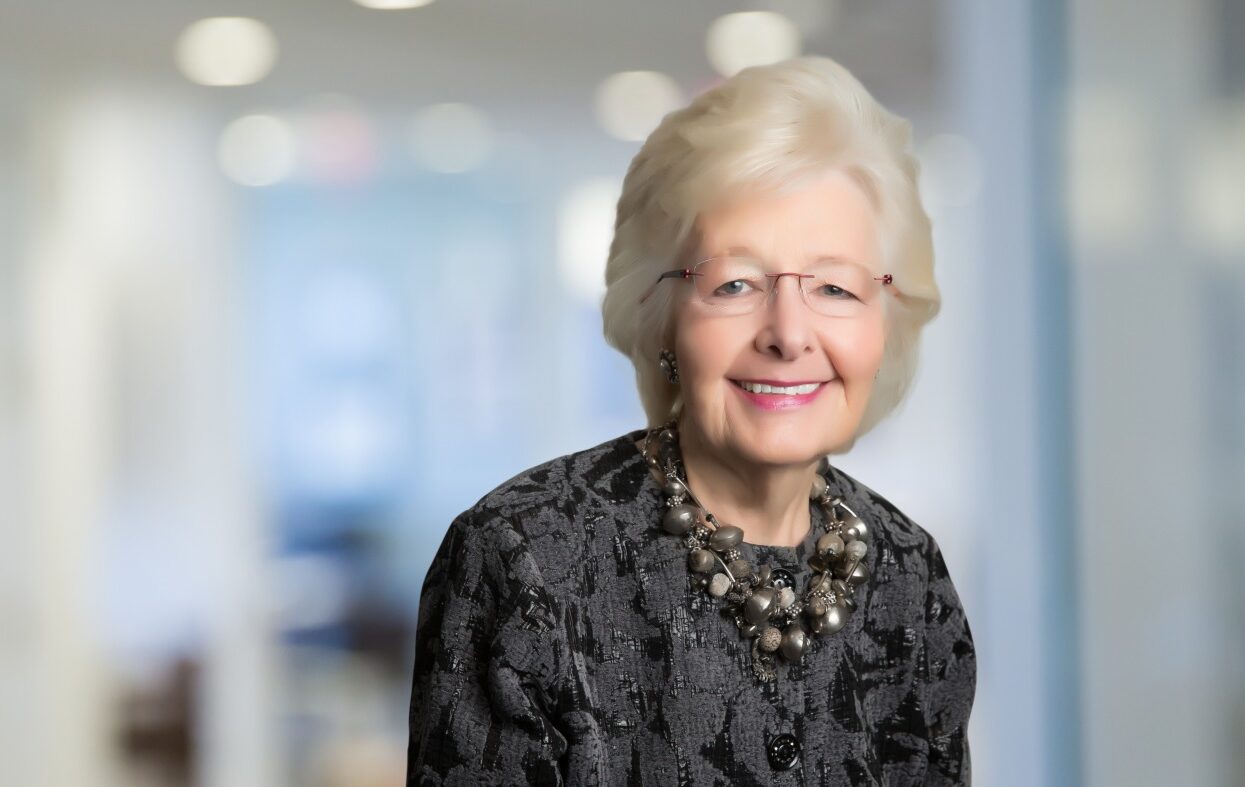
Early in her legal career, just out of law school, Marilyn Zahm represented indigent clients for a legal services program in Buffalo, New York.
One day in court as she was walking up to the bench, she recalls, the judge looked at her sourly and warned, “If this is another one of your welfare cases….”
Uh-oh, she thought. But she was undeterred. She knew she had a strong case. She figured that even this hostile judge would see that.
He didn’t. She lost. But she gained something.
She says she came away from the experience understanding how important it is for a judge to ensure that everyone has the opportunity to present their case. That the judge hear every case fairly, decide solely on the evidence. “And not,” she says in her characteristic blunt fashion, “on some preconceived notion that poor people weren’t worth your time.”
“That’s stayed with me throughout my entire career,” she says.
That idealistic young attorney would continue to fight for fair and equal treatment of people, especially workers, before becoming a judge herself in the administrative law realm. Later she came to occupy a particularly rare judicial position in the United States: president of a judges’ union.
In 2016 Judge Zahm made history as the first woman elected to lead the Association of Administrative Law Judges (AALJ). That’s the union representing some 1,100 ALJs at the Social Security Administration. Those judges mostly decide whether someone is eligible to receive disability benefits. The AALJ is an especially influential union because Social Security, which has 164 offices nationwide, employs about five times as many ALJs as all other federal agencies combined.
The union started out in 1971 as a simple professional association of judges. That changed in the late 1990s when the agency undertook a reorganization. As Zahm, who was hired as a Social Security judge in 1994, recalls it, management invited input from the staff attorneys and clerks but wouldn’t talk to the judges because they had no collective bargaining representative. The judges’ association promptly reorganized as a union and was certified as the collective bargaining rep in 1999.
If Social Security judges, who enjoy decision-making independence from the agency, had issues with management before forming a union, the disagreements have only increased in recent years. Long case backlogs have led to pressure on judges to make decisions faster, and there has even been political pressure for judges to be more skeptical of disability claims.
Judge Zahm, who retired from the bench in 2019 after her three-year term as union president (she was 70 when elected), rejects the notion that disability claimants are mainly malingerers.
“Most people, I have found, would rather work,” she says. “They don’t want to be on disability. Disability is kind of a last resort.”
Marilyn Zahm grew up in Buffalo, the eldest of seven children in a traditionally large Catholic family. She primarily attended Catholic school from kindergarten through her undergraduate days at St. Bonaventure University, about 75 miles south of Buffalo, and law school at Catholic University in Washington, D.C.
She says she was strongly influenced by Catholic teaching on social justice – and by one of her father’s favorite sayings.
“He had a lot of favorite sayings,” she says, “but one that stuck with me was, ‘Those to whom much is given, much is expected.’”
It wasn’t that Judge Zahm grew up in luxury; her father was a teacher and administrator, the family solidly middle class. He meant that much was given to her and her siblings intellectually and educationally.
“I was expected to use my brain for the good of the community.”
She quickly rose to executive director of the legal services program for the indigent in Buffalo. At the time it was under the aegis of the Legal Aid Bureau of Buffalo. She says Legal Aid was an old-line group in the tradition of the Rotary, and its board was stocked with establishment figures in the community.
She surprised them by having her organization sue the City of Buffalo to open the fire department to women firefighters. It sued banks over violations of truth-in-lending laws to help clients get out from under unfair financial obligations. It sued the school board to establish a school breakfast program.
These actions were not appreciated by all. One day, she says, the Legal Aid director called her into a meeting. He left her alone in the office with the retired chief judge of New York state’s equivalent of the supreme court.
“He made it very clear that I had better stop causing trouble with all these lawsuits,” she says. “He said they didn’t like it, and if I didn’t stop this, he intimated that he was going to ruin my career in Buffalo.”
Judge Zahm says she was young and naïve. She looked at the senior judge, who was in his late 70s, and figured he would be dead before he could ruin her career. Instead of backing down, she formed a new corporation for the legal services organization and obtained the grant that had been flowing to the group through Legal Aid. The change gave the group more independence.
“I’m surprised now that I did that because he probably did have the ability to ruin my legal career, but I was too dumb to know it,” she says.
After two years heading Neighborhood Legal Services, she became a trial attorney in the Buffalo office of the National Labor Relations Board. There she represented the agency in unfair labor practice proceedings before federal administrative law judges.
As happened at the legal services nonprofit, one case in particular left a lasting pression.
She was investigating a case of workers who felt they had been terminated unfairly. The employer was in a poor rural community. The plaintiffs suggested she talk to a particular supervisor at the firm.
The suggestion surprised her because normally people in management avoid lending support to workers’ complaints. They fear being fired for disloyalty.
Judge Zahm says she told the recommended supervisor that she could try to keep his participation in the investigation anonymous, but he might be called to testify in court. She says he told her he was willing to go on the record.
“I was blown away because that hardly ever happened,” she says. “I thought, this is a man who’s got a lot to lose and he’s willing to put himself out there for his fellow employees. It turned out I never had to reveal what he’d spoken to me about (the company settled the case). But that stuck with me because such courage is rare.”
Judge Zahm’s first experience as an administrative law judge came in her next career stop, still in Buffalo, with the New York State Public Employment Relations Board.
After 11 years with the state board she moved on to the western New York office of Social Security in Buffalo.
Being hired as a Social Security ALJ meant going through a merit-based civil service application process. That included taking a national test and documenting decisions she had written. The agency reached out to parties that had appeared before her to find out what they thought of her. The last step was a structured interview. The entire process took about a year. She scored high enough to merit hiring.
When the judges’ professional organization transformed into a union, Zahm was asked to help write the group’s constitution. The union’s organizers knew of her previous experience at the NLRB. While there she’d also served as vice president of the local union for professional staff in the Buffalo office.
At Social Security she began helping members file grievances. One of the union leaders at the national level noticed and asked her to serve as regional vice president.
The leader assured her it wouldn’t be a lot more work because most such litigation in the region was already coming out of her office.
It wasn’t that Judge Zahm was constantly filing complaints, but she was, in her own words, “more ready than other people to challenge decisions that were being made.”
She was eventually asked to fill an open position as executive vice president of the union. She was later elected to the same position by the entire union’s membership. She says it meant a lot to her to be recognized by her fellow judges.
Social Security judges who know her from that time talk about the great lengths to which she went to help fellow judges, even before she sought any elected position with the union.
They say she would often stay late into the evening to tutor and mentor new judges on her own time. She wanted to make sure the newcomers not only survived the demanding workload but got the decisions right.
“She saw a need, and she didn’t wait to be asked” says one judge from that time who asked to remain anonymous because the judge is still on the bench.
Bryce Baird, an administrative law judge who joined the Buffalo office in 2015, says, “She was beloved by staff and treated her job with the utmost in ethical standards and integrity. That’s not something, in my experience, that all judges do, sadly…. She’s the type of judge who made the claimant feel like they were the only case on her docket.”
In 2013 Judge Zahm and the union’s president at the time appeared on “60 Minutes” as part of an investigation into a scandal uncovered by a reporter for the Wall Street Journal. A Social Security judge in Huntington, West Virginia, had been found to be awarding disability benefits in close to 100 percent of his cases. The national average approval rate at the time was about 65 percent.
As Judge Zahm explains it, it wasn’t that the judge was soft hearted. His actions were a combination of bribery from one particular attorney and the result of pressure from management to decide disability cases faster.
The fastest way to clear a case at that time, she says, was to award benefits because no one appeals that decision. Judge Zahm says Social Security management had noticed the West Virginia judge’s case-clearing speed, gave his office an award, and started sending him more and more cases.
On “60 Minutes,” Judge Zahm and the union president explained why it’s impossible for Social Security judges to decide cases fairly, accurately and as rapidly as management would like. The main reason: Social Security judges operate unlike any other judges in America.
Instead of listening to the arguments of lawyers for both sides and then ruling on which side is right, a Social Security judge is responsible for investigating the facts (which sometimes entails reading thousands of pages of medical evidence) and then making the cases both for paying and for not paying benefits by ensuring that all evidence makes its way into the record. The last step is for the same judge to make the ruling.
Based on the number of cases required to be adjudicated, and the number of hours in a work year, judges have an average of 2½ hours to fully adjudicate a case, including reviewing all evidence and holding a hearing at which testimony from the claimant and expert witnesses is taken. Her judicial colleague who asked to remain anonymous says, “Marilyn pushed back, and she was frequently in the crosshairs (of management) as a result.”
While the agency prized speed, Judge Zahm says she was concerned with thoroughness.
Judge Zahm emphasizes that the union and management weren’t always in conflict. They collaborated in creating a new training manual and program for arriving judges. But as president, she faced many of the same longstanding issues about backlogs and case-processing speed.
And there were new battles.
At one point the agency attempted to divert some of the work done by administrative law judges — including hearing and deciding cases — to administrative judges. Those are employees of the agency and can thus be fired if they don’t rule often enough the way management would like.
Judge Zahm testified before a congressional committee about judges’ concerns over the potential erosion of objectivity. She succeeded in winning bipartisan support to pressure the agency to abandon the plan.
“It was probably her biggest accomplishment” as union leader, says Robert Lesnick, former chief judge at the Federal Mine Safety and Health Review Commission.
That was during the Obama administration.
The Trump administration, no ally of organized labor, issued an executive order that forbade judges from engaging in most union activities during office hours. Until that time, judges who were officers of the union were given reduced caseloads so they could handle union responsibilities. That kind of arrangement is common at many union workplaces.
Rather than backing away from her work with the union because of the executive order, Judge Zahm says she used her vacation and other leave time to keep working.
In the meantime, a coalition of federal unions, including the International Federation of Professional and Technical Engineers (the judges’ parent union), sued the government.
“I was not going to let the union cease functioning simply because of those executive orders,” she says. “And then we were lucky enough to get a federal district court judge to find that the orders were illegal.”
It wasn’t a complete victory. A federal appeals panel later ruled that the president had the right to issue the executive order. Whether that order could abrogate the terms of the agency’s contract with the union was another matter. Judge Zahm had also filed a grievance. In the end, the parties settled. The union’s officers were allowed to continue their duties during office hours under the terms of the existing contract.
Not every Social Security judge supported Judge Zahm’s efforts as leader of the union, but she had many ardent supporters. Several contacted The National Judicial College to endorse her nomination for recognition as a Judicial Heroes & Legend.
“She broke a glass ceiling,” says Judge J.E. Sullivan, a senior ALJ at the U.S. Department of Transportation. “And when a woman leader breaks a glass ceiling, inevitably there is glass at her feet. Throughout her leadership as president, there were always dissenters and naysayers. But Marilyn never lost sight of her goals. She never gives up.”
One of the Social Security judges who wasn’t immediately impressed with Judge Zahm’s efforts with the union was Bryce Baird, who joined the agency as an ALJ around the same time Zahm was running for president.
At a meeting with union leaders where Judge Zahm was present, Baird asked who had been responsible for a controversial action the union had taken in response to the case-decision speedup.
“I already knew it was Judge Zahm herself,” Judge Baird says. “She said ‘It was me’ and explained her reasons. She didn’t show any animus toward me or the loaded question I had asked.”
Some time later, he says, he found himself butting heads with management and received a formal reprimand. President Zahm helped him take his grievance to arbitration. And they won.
“She worked harder on that arbitration than I did,” he says. “And mine wasn’t the only arbitration she was prosecuting across the country at the time. She literally worked harder on it than I did, and that told me something about her character.”
After retiring from the bench when her term as president ended in 2019, Judge Zahm moved to Chicago to be closer to her children and grandchildren. She still takes on cases of friends at Social Security who are involved in arbitration over a grievance. She always does this on a pro bono basis.
She says she’s proud that the AALJ constitution pledges the union to fight not just for better working conditions for judges. It aims to protect due process in administrative hearings for the American public. The constitution is designed to ensure that all citizens can count on having access to an impartial decision maker.
Over her long career, she never forgot what it was like facing that biased judge in her early years. She worked to ensure there were never any such judges sharing a court with her.

The Hon. Mary-Margaret Anderson (Ret.), a retired administrative law judge with the California Office of Ad...

Happy October, Gaveliers faithful. Are you loving this or what? No one believed a team made up of judges...


Hon. Diane J. Humetewa, the first Native American woman and the first enrolled tribal member to serve as a ...

Retired Massachusetts Chief Justice Margaret H. Marshall has been selected as the 2024 winner of the presti...